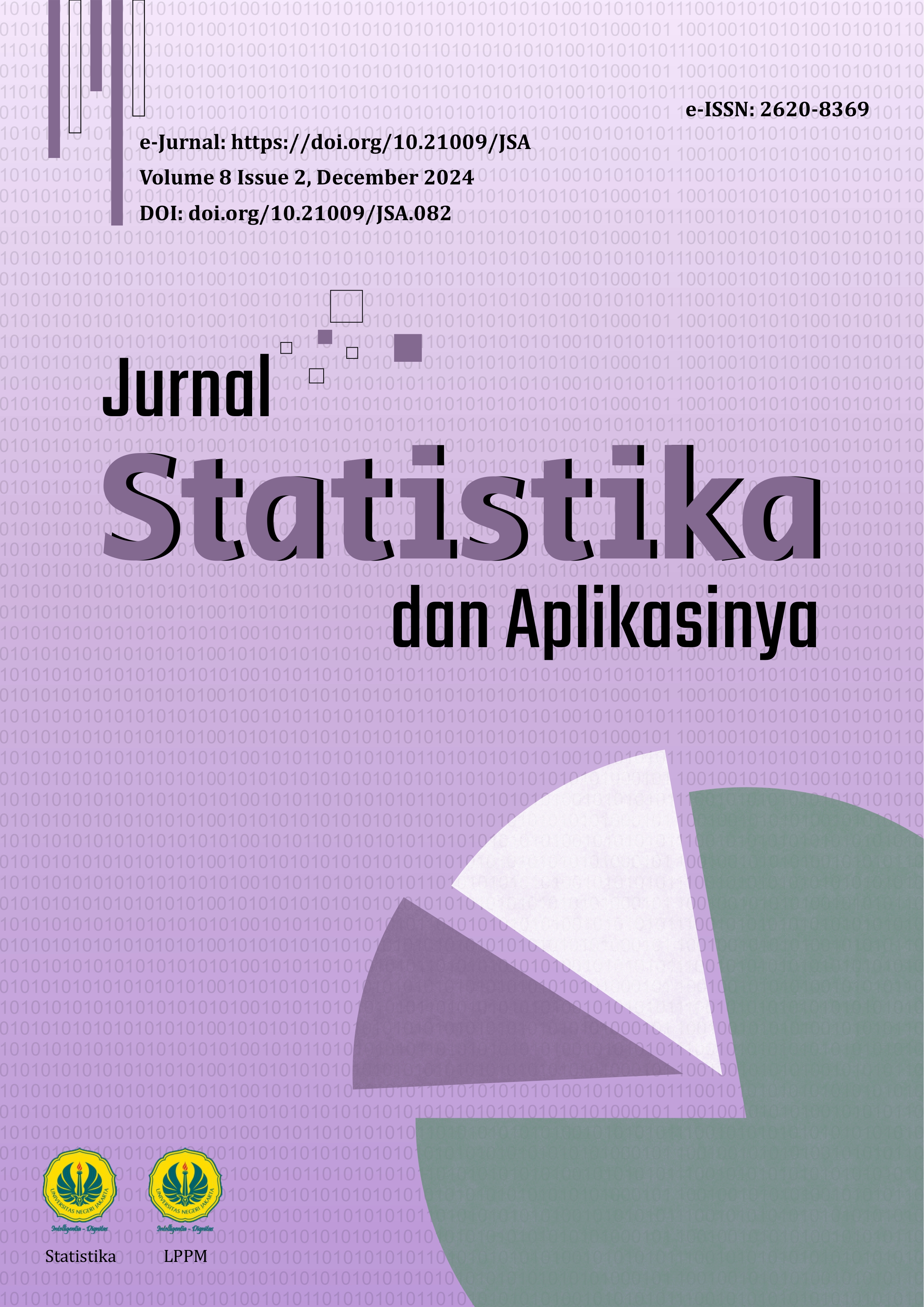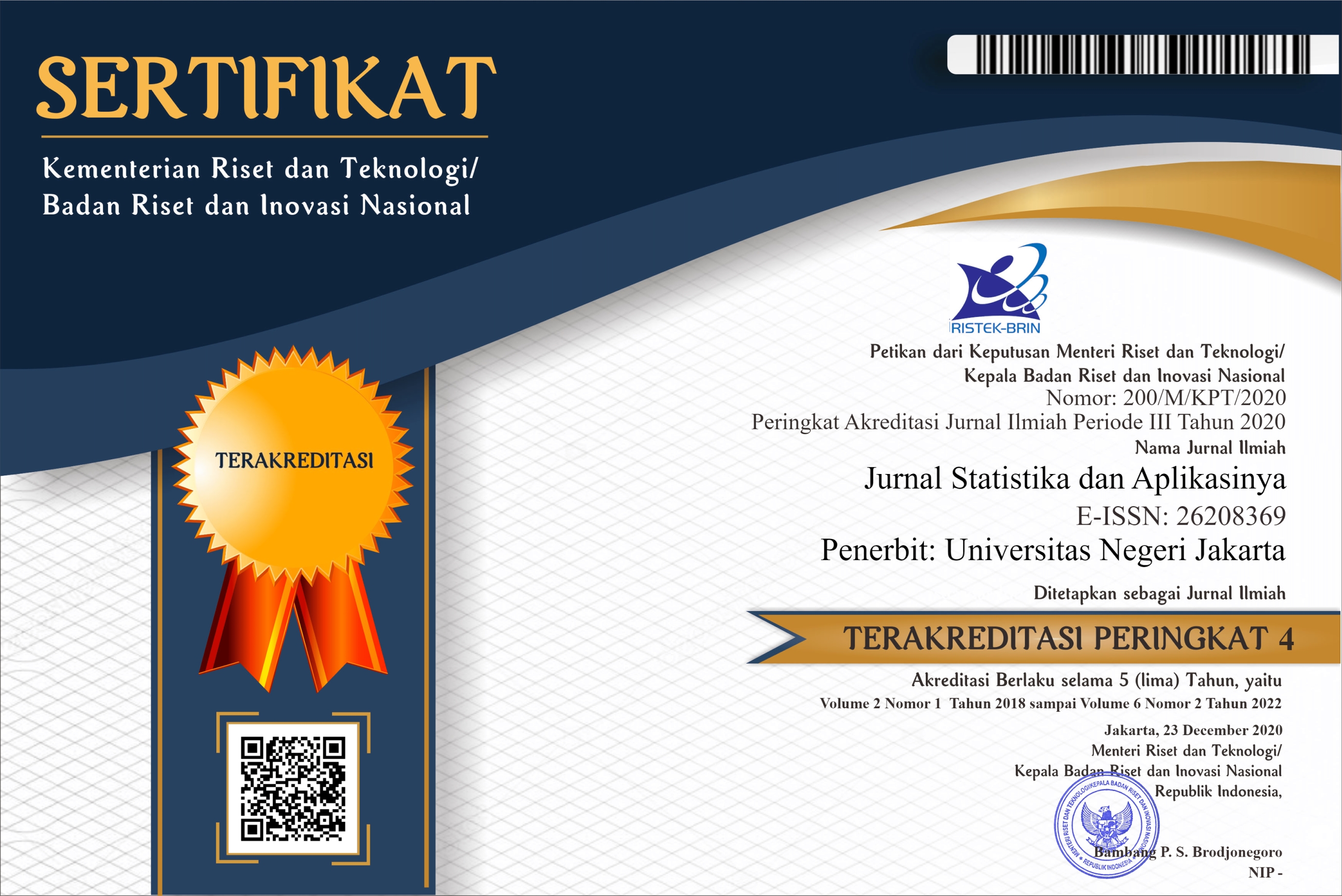VISUALIZATION AND MAPPING OF HOUSEHOLD HOUSING CONDITIONS IN WEST JAVA USING MULTIDIMENSIONAL SCALING
DOI:
https://doi.org/10.21009/JSA.08201Keywords:
Multidimensional Scaling, housing conditions, spatial analysis, West Java, InftastructureAbstract
This study aims to map household housing conditions in West Java using the Multidimensional Scaling (MDS) approach. West Java, as the most populous province in Indonesia, faces significant challenges regarding housing inequalities, infrastructure access, and socio-economic disparities between urban and rural areas. These disparities necessitate a comprehensive and systematic approach to identify vulnerable regions and inform targeted policy interventions. Using data from the 2023 National Socio-Economic Survey (Susenas), this study analyzes five main groups of variables: basic needs, housing facilities and ownership, socio-economic status, access to services and infrastructure, and household demographics and welfare. The Multidimensional Scaling (MDS) technique is employed due to its capability to reduce complex, high-dimensional data into a two-dimensional representation, allowing clearer visualization of regional disparities and interrelationships among variables. MDS also facilitates robust model evaluation, ensuring high-quality mapping results. The MDS results reveal significant variations in household conditions, with urban areas such as Bekasi and Depok City showing better infrastructure access and welfare outcomes compared to rural areas like Cirebon and Sukabumi District. Evaluation of the MDS model indicates excellent performance, with STRESS values ranging from 0.042 to 0.083 and RSQ values between 0.993 and 0.999, demonstrating high accuracy. This study addresses a research gap where few studies have comprehensively mapped housing inequalities in large, diverse regions like West Java using advanced multidimensional techniques. The findings emphasize the importance of policies focusing on infrastructure development and equitable distribution of social assistance in underdeveloped regions to reduce regional disparities.






